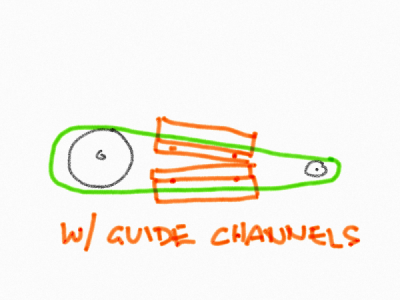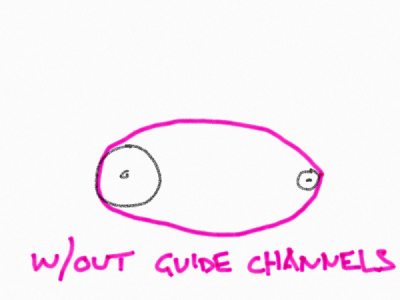- Joined
- Sep 5, 2018
- Messages
- 6
I have had too much time on my hands while waiting for delivery of an early model Shape-Rite. I have studied many pictures and I think I can make three modifications that will be useful. I am speculating that these ideas will work. If anyone has made any of these please let me know.
1. It needs a clutch. The larger machines all have clutches for obvious reasons but a small machine could be safer and easier to operate with a clutch.
While running if the motor mount was raised it should cause the drive belt to slip and if there is enough friction in the moving parts the ram should stop in a short time.
If that is true an arm attached to the motor mount extending toward the center of the machine on the right side could be used to start and stop ram motion.
A vertical arm with a concentric against the first arm would allow a forward/rearward motion to engage/disengage the belt tension.
2. Vertical table feed. Who wants to have their hand on the tool head handle while the machine is running.
If it is possible! Move the table vertical height shaft from the left side to the right side. That should put it next to the horizontal feed shaft. Gear connect the two shafts.
Make the ratchet mechanism switchable between the two shaves, ie. disengage one shaft and engage the other to switch feeds.
3. Self stopping at the end of a pass.
I plan to put adjustable limit switches on the table travel. I like to let a machine run while I work on another task.
That would require a motor relay that is held on through the NC contacts of the switches.
After I get my machine I will look at the three mods in more detail and follow up with my plan. If anyone has done these please save me some time designing the changes.
1. It needs a clutch. The larger machines all have clutches for obvious reasons but a small machine could be safer and easier to operate with a clutch.
While running if the motor mount was raised it should cause the drive belt to slip and if there is enough friction in the moving parts the ram should stop in a short time.
If that is true an arm attached to the motor mount extending toward the center of the machine on the right side could be used to start and stop ram motion.
A vertical arm with a concentric against the first arm would allow a forward/rearward motion to engage/disengage the belt tension.
2. Vertical table feed. Who wants to have their hand on the tool head handle while the machine is running.
If it is possible! Move the table vertical height shaft from the left side to the right side. That should put it next to the horizontal feed shaft. Gear connect the two shafts.
Make the ratchet mechanism switchable between the two shaves, ie. disengage one shaft and engage the other to switch feeds.
3. Self stopping at the end of a pass.
I plan to put adjustable limit switches on the table travel. I like to let a machine run while I work on another task.
That would require a motor relay that is held on through the NC contacts of the switches.
After I get my machine I will look at the three mods in more detail and follow up with my plan. If anyone has done these please save me some time designing the changes.


